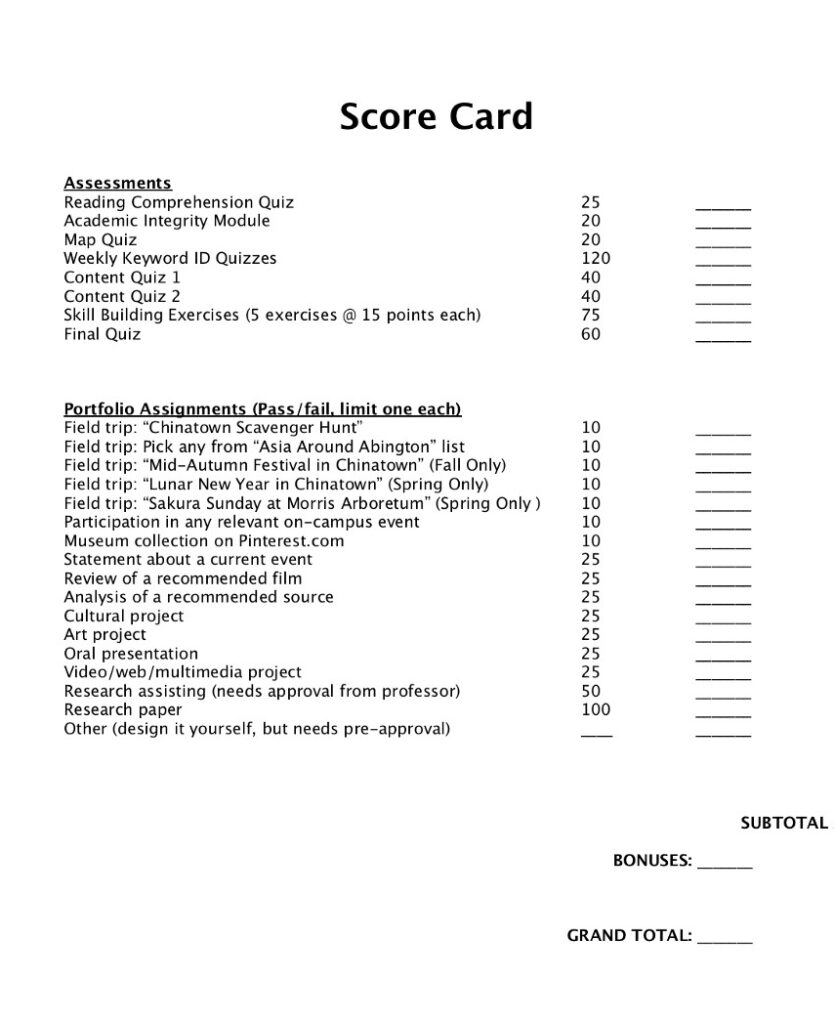Every semester, I teach an introductory-level course on Asian history or religious studies with enrollments of 25–30 students per section (no TAs). The students who take these courses tend to be non-majors who are trying to fulfill a humanities and “international cultures” credit on their transcript. In an initial questionnaire I distribute at the beginning of the semester, it is typical for at least 75% of the class to report that they have little to no interest in the subject. Most often, the bulk of these students are business and science majors who have little interest in the materials or methods of a college-level humanities class.
At the same time, I will also normally also have a certain percentage of the class that is quite interested in the subject, that is composed of humanities majors, and that is fully prepared to dive in to the topic. Having struggled with this “bimodal” dynamic in past years, I now understand my job as an educator in these situations as something of a balancing act: inspiring unengaged students to become interested in a particular aspect of Asian culture, while giving those who are ready to do so an opportunity to delve more deeply into the topic.
Over time, I have developed a grading system called the “Scorecard” that attempts to meet the needs of both kinds of students. In essence, the Scorecard gives students a menu of options for how they are going to earn points in the class, ranging from low-stakes quizzes and field trips to high-stakes research papers and creative projects. All students start at zero, and are able to earn points in whatever way makes sense to them to arrive at the final grade they want. This system allows them maximal flexibility to play to their strengths and pursue their own interests. At the same time, it also encourages students to take a more active role in designing their assignments and to take responsibility for their educational experience. I accept projects in formats as diverse as multimedia presentations, tutorial videos, podcasts, art, fiction, ethnography, Wikipedia entries, websites, computer games, cultural projects, and more.
As you can see on the Scorecard, around half of the course credit (scored on a scale of a total of 500 points) is assessed based on in-class metrics called “assessments,” such as quizzes and exams. Another half of the final grade is assessed based on “portfolio projects,” which the students can either choose from the menu or design themselves. The topics for these are open-ended, so a criminal justice student might do an oral presentation on a Song dynasty forensic manual, for example, while an economics student may write a paper on an aspect of intercultural trade, and an art student might produce a copy of a landscape painting. Everyone can get credit for producing work that relates to a topic of interest to them, and have control over the format, length, and point-value of the project or projects they will complete. Not listed are incentives (called “bonuses”) for classroom participation and for seeking extra help, as well as penalties for absences and other transgressions.
A copy of a recent version of my syllabus is available here. The Scorecard itself is on the last page. The remainder of the document consists of additional details and information about the individual items. The result of several years of development and tweaking, this solution is working well for me in my classes to meet the needs of a diverse student population and to maximize engagement in the class. See what you think and let me know if you have any feedback. And, if you’re using something similar in your classes, let me know how it’s going for you.
